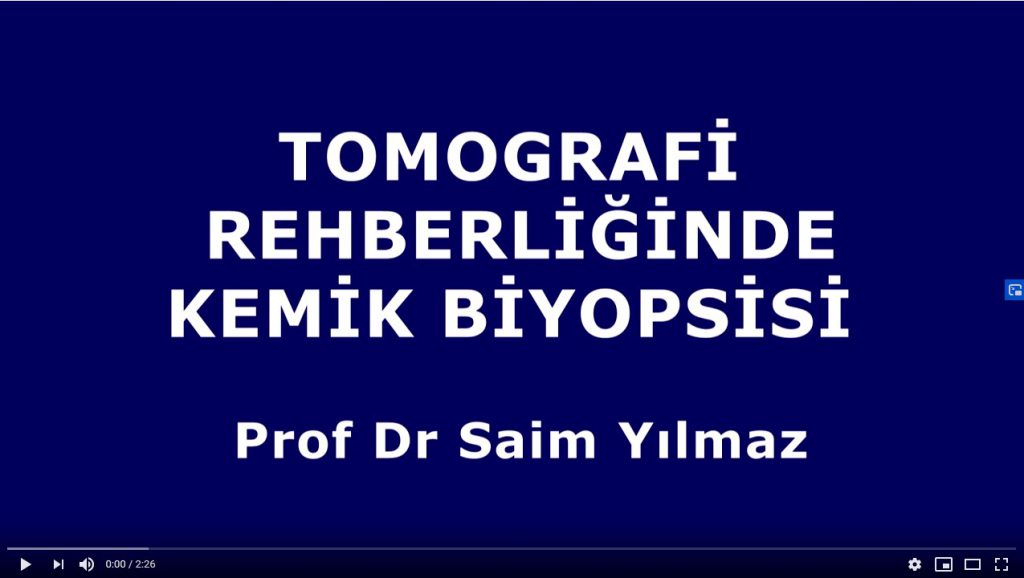Both benign and malignant tumors are frequently encountered in the bone. Malignant tumors, that is, cancers, can originate from bone tissue (primary cancers) or they can originate from other organs and spread to the bone (metastases). If a suspicious mass is found in the bone with imaging methods, a biopsy is required to clarify this situation.
As in other organs, the ideal biopsy method in bone is needle biopsy. Surgical method should be considered as a last resort due to reasons such as requiring general anesthesia and surgery, higher complication rate and requiring hospital stay. Needle biopsy of bone can be done in two ways:
Standard cutting needle (trucate, core) biopsy: In some cases, the mass in the bone protrudes by breaking up the hard outer layer of the bone called the cortex. In such cases, since it is not necessary to pass the hard bone cortex with a needle, as in other soft tissue biopsies, this mass protruding from the bone can be easily biopsied with a cutting needle. For this purpose, ultrasound or tomography guidance can be used.

Thick needle biopsy: In many cases, the suspicious mass is inside the bone and must be reached by piercing the hard outer layer of the bone (cortex). In these cases, under the guidance of tomography, the cortex is punctured by entering through the skin with a thick needle and the suspicious mass is reached. Then, a long piece of 2-3 mm thick is taken from the bone with a separate cutting system sent through this needle, and the process is terminated by pulling the needles.
Bone biopsy, like other biopsies, is a biopsy method that is comfortable for the patient and is extremely accurate, performed through a pinhole under local anesthesia. In some cases, a bone biopsy may be performed in combination with treatments that destroy the tumor, such as percutaneous ablation, or strengthen the bone, such as vertebroplasty-cementoplasty. In this case, both the diagnosis is made and the treatment is applied to that area with a single operation.


